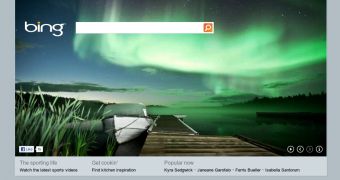Bing is running a really cool background in the US at the moment. The Microsoft-owned search engine is showing a video of an Aurora Borealis in full splendor. It's a short video, but it's rather catchy.
Aurora Borealis is a fascinating phenomenon, both in its beauty but also in the science behind it.
The really interesting part this time though, is behind the scenes in the way Bing has chosen to display the video, via HTML5. That's hardly surprising, Bing has been boasting about full HMTL5 support for a while now.
What's more, HTML5 support in Internet Explorer 9 was one of the most touted features.
But once again, the fragility of web standards and the complexity of something that should simplify things comes into play. While most modern browsers support HTML5 video, they don't all support the same codecs for the videos streamed.
As such, one video may play in one browser, but not in others, even though they all support the HTML5 <video> tag.
It stems from the fight between the proprietary h.264 video codec and the open-source WebM video codec. Many major software companies have a stake in h.264, including Microsoft and Apple, makers of two of the most popular browsers out there, Internet Explorer and Safari, have put their weight behind it.
At the same time, Google, joined by Mozilla, Opera and others are supporting the open-source WebM.
In practical terms, this means that any website that wants to serve HTML5 video has to store two copies of said video, one encoded with h.264, the other with WebM.
That's exactly what Bing chose to do, if you visit the site in Chrome or Firefox, you get the WebM video, if you visit with Internet Explorer you get the h.264 video, as an MP4 file. You can check out any of these links, whichever works for you, in case the video is no longer on the Bing homepage.

 14 DAY TRIAL //
14 DAY TRIAL //